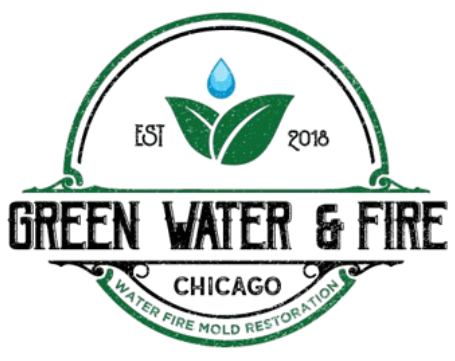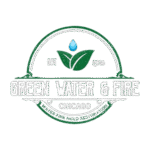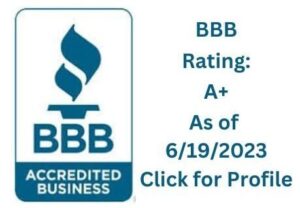Water damage may occur anytime, whether it’s a burst pipe, a leaking roof, or a flood. It can become a major issue that can destroy your home, furniture, and even the integrity of the building. For many homeowners, it can be difficult to know what to do when the water stops running. That is why it is Important to know the Water Damage Restoration Process. In this guide, we’ll take you through every step, from the initial inspection to the final results.
What is Water Damage Restoration?
Water damage restoration is cleaning, fixing, and repairing a house that has been affected by water. It means to return the building or home to the way it was before the damage. It is important to extract excess water, dry the affected areas, clean and sanitize all surfaces, and fix or replace broken items. There are many ways that water damage can happen to a home:
- Natural Disasters: Flood, storm, and hurricane.
- Plumbing Failures: Broken pipes, a leaky roof, or a malfunctioning appliance.
Human Error: Bathtubs or sinks left to overflow.
Types of Water Damage and Their Causes
Water damage varies in types. One of the worst things about water damage is that it can become worse quickly and silently. By the time you see a stain or smell mildew, the water can cause serious damage underground. That’s why we need to locate and address the source quickly. Water damage restoration experts usually classify water damage into three main categories:
- Clean Water: The water comes from a clean source, such as a broken pipe or an overflowed sink. It is the safest and easiest way to clean up.
- Gray Water: Gray water is water that may contain small amounts of contaminants from washing machines, dishwashers, or tubs.
- Black Water: The worst water is Black Water, because it is extremely contaminated. It may be floodwater, sewer backflow, or water from rivers or oceans.
The longer the water sits, the more severe the damage. Water can seep to adjacent rooms and soak into porous materials within minutes. Wood starts to swell, drywall becomes weak enough to crumble, and mold spores flourish within hours. If left to its own devices for just a couple of days, the damage may drive major structural issues and even health hazards.
Step-by-Step Water Damage Restoration Process

Drying out the stricken areas isn’t as straightforward as simply drying things out. It’s a detailed process to ensure the place is bone dry, any hazardous material is removed, and it’s clean and safe for inhabitants. If you don’t properly follow these steps, you may be left with mold, damaged structures, or unpleasant smells later. Follow this step-by-step guideline for the water damage restoration process.
Step 1 – Inspection and Assessment
The first step in any restoration project is to examine the damaged area and how severe the damage is. A building professional uses a moisture meter, an infrared camera, and a visual inspection to determine how far the water has spread and what materials are damaged. They’ll also determine what kind of water is present (clean, gray, or black), so they can figure out the most effective approach to damage control.
Step 2 – Water Removal and Extraction
As soon as the source of the water is addressed, your focus should shift to removing any Remaining water. And the only way to do this is with heavy-duty pumps and wet/dry vacuums. You need to handle it quickly, as this water can damage your home with bacteria and mold growth. Even small pools can cause trouble if they seep into walls or subflooring.
Step 3 – Drying and Dehumidification
Once you remove the water, moisture will still be there in wood, drywall, and flooring. Air movers and dehumidifiers are deployed to extract the moisture that has been absorbed. How long this process will take depends on how saturated the area is and the size of the area. They check the moisture in the building to ensure everything is drying and to prevent mold from spore production.
Step 4 – Cleaning and Sanitizing Affected Areas
Once the area is dry, you must begin cleaning and disinfecting everything it covered. This is crucial when the water is gray or black. Experts use antimicrobial solutions, air scrubbers, and disinfectants to eliminate bacteria and bad smells. Carpets, clothing, and furniture can be cleaned or replaced, depending on the condition.
Step 5 – Repair and Restoration
Finally, you’ll restore your home or building to its pre-disaster state. It could be a simple process, as addressing minor problems with drywall and a new painted surface, or it could be extensive repairs of the damaged building. In many cases, restoration companies can help you and your adjuster come to terms with your claim faster.
Water Mitigation vs. Water Restoration: What’s the Difference?
It is common for people to get water mitigation and water restoration confused, but they both refer to completely different parts of the cleanup process.
Water Mitigation: Its main purpose of prevent further damage from water . You need to turn off the water, wipe up any standing water, cover any damaged areas if necessary, and stop the problem from spreading.
Restoration of water: Not just a repair. You need to dry, clean, and disinfect the area, swap out and replace any torn or damaged components, and return everything to its original state. Restoration is an intervention that helps a place be used and enjoyed again in the future.
When you notice water damage, you need mitigation services immediately. However, restoration normally starts after the area is secured and dried.
Preventing Future Water Damage
Routine Maintenance Tips For Homeowners
- Check pipes for leaks or signs of rust periodically
- Inspect your roof for missing or injured shingles
- Trim back trees and shrubs, and clean gutters
- Install sensors near water heaters, washing machines, and under sinks
- Smart alarms that buzz straight to Mom’s phone
- Use a waterproofing material to seal any foundation cracks or gaps
- Waterproof the walls and the floor
- French drain and gutter maintenance
Restoration from water damage involves more than just drying out a room – the proper tools, techniques, and knowledge are necessary to ensure all hidden moisture and contamination are cleared.
Conclusion
The idea of water damage can feel overwhelming, but returning your home to a livable condition will help you to overcome the issue as soon as it happens. Follow these steps to avoid mold growth and structural damage as well as health problems.
FAQs
Temporary problems could be repaired within days, but if there a major damage, it could take weeks.
Yes, you may be able to fix it yourself if it’s a minor issue. However, it would be great to call in professionals for help if the damage is severe.
Yes, strong preventative measures like regular inspections, good drainage, and protective devices can prevent future problems.


















